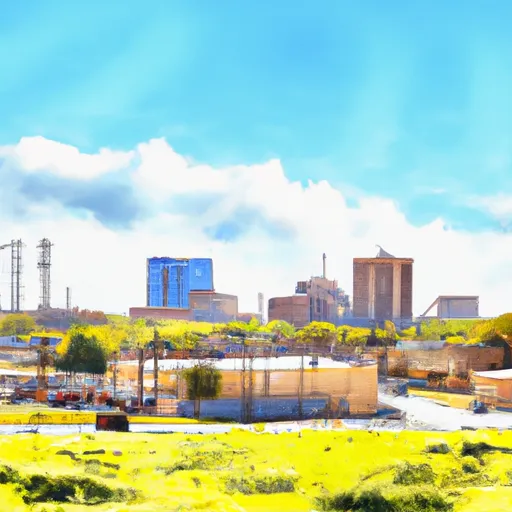-
 Snoflo Premium
Snoflo Premium
Get unlimited access to all our content
With no Ad interruptions! - Start Your Free Trial Login with existing account
Prairie-Lea
Eden Index
Climate
7.8
•
Recreation
3.4
•
Community
0.8
•
Safeguard
4.5/10

Prairie-Lea, Texas is a small, unincorporated community located in Caldwell County. Situated in the southern part of the state, Prairie-Lea experiences a subtropical climate characterized by hot summers and mild winters. Summers are typically hot and humid, with temperatures often exceeding 90°F (32°C), while winters are generally mild with temperatures ranging between 40°F to 60°F (4°C to 15°C).
Hydrologically, Prairie-Lea lies within the Colorado River basin. The region is dotted with creeks and small tributaries, contributing to the local hydrology. The area receives an average annual rainfall of about 38 inches, with most precipitation occurring during the spring and fall months.
Outdoor recreation enthusiasts will find several opportunities in and around Prairie-Lea. The nearby Plum Creek Wildlife Management Area offers hunting and fishing activities, allowing visitors to engage in birdwatching, deer hunting, and fishing for bass and catfish. The Lockhart State Park, just a short drive away, provides opportunities for camping, hiking, and golfing. Additionally, the picturesque countryside surrounding Prairie-Lea is perfect for scenic drives, picnicking, and nature photography.
What is the Eden Index?
The Snoflo Eden Index serves as a comprehensive rating system for regions, evaluating their desirability through a holistic assessment of climate health, outdoor recreation opportunities, and natural disaster risk, acknowledging the profound impact of these factors on livability and well-being.
Climate Health Indicator (CHI): 7.8
Prairie-Lea receives approximately
867mm of rain per year,
with humidity levels near 90%
and air temperatures averaging around
20°C.
Prairie-Lea has a plant hardyness factor of
8, meaning
plants and agriculture in this region tend to thrive here all year round.
By considering the ideal temperature range, reliable water supplies, clean air, and stable seasonal rain or snowpacks, the Climate Health Indicator (CHI) underscores the significance of a healthy climate as the foundation for quality living.
A healthy climate is paramount for ensuring a high quality of life and livability in a region, fostering both physical well-being and environmental harmony. This can be characterized by ideal temperatures, reliable access to water supplies, clean air, and consistent seasonal rain or snowpacks.
Weather Forecast
Streamflow Conditions
Guadalupe
Area Rivers
Guadalupe
Snowpack Depths
Guadalupe
Reservoir Storage Capacity
Guadalupe
Groundwater Levels
Recreational Opportunity Index (ROI): 3.4
The Recreational Opportunity Index (ROI) recognizes the value of outdoor recreational options, such as parks, hiking trails, camping sites, and fishing spots, while acknowledging that climate plays a pivotal role in ensuring the comfort and consistency of these experiences.
Access to outdoor recreational opportunities, encompassing activities such as parks, hiking, camping, and fishing, is crucial for overall well-being, and the climate plays a pivotal role in enabling and enhancing these experiences, ensuring that individuals can engage in nature-based activities comfortably and consistently.
Camping Areas
| Campground | Campsites | Reservations | Toilets | Showers | Elevation |
|---|---|---|---|---|---|
| Berry Springs Park and Preserve | None | 673 ft | |||
| McKinney Falls State Park | 89 | 571 ft | |||
| Emma Long Metropolitan Park | 60 | 499 ft | |||
| Camp Mabry Military | None | 654 ft | |||
| Jim Hogg - Lake Georgetown | None | 880 ft | |||
| Cedar Breaks - Lake Georgetown | None | 841 ft | |||
| Palmetto State Park | 40 | 336 ft | |||
| Russell Park - Georgetown Lake | 21 | 898 ft | |||
| Lockhart State Park | 20 | 499 ft | |||
| Cypress Creek - Lake Travis | None | 804 ft |
Nearby Ski Areas
Catastrophe Safeguard Index (CSI):
The Catastrophe Safeguard Index (CSI) recognizes that natural disaster risk, encompassing floods, fires, hurricanes, and tornadoes, can drastically affect safety and the overall appeal of an area.
The level of natural disaster risk in a region significantly affects safety and the overall livability, with climate change amplifying these risks by potentially increasing the frequency and intensity of events like floods, fires, hurricanes, and tornadoes, thereby posing substantial challenges to community resilience and well-being.
Community Resilience Indicator (CRI): 0.8
The Community Resilience Indicator (CRI) recognizes that education, healthcare, and socioeconomics are crucial to the well-being of a region. The CRI acknowledges the profound impact of these elements on residents' overall quality of life. By evaluating educational resources, healthcare accessibility, and economic inclusivity, the index captures the essential aspects that contribute to a thriving community, fostering resident satisfaction, equity, and social cohesion.

